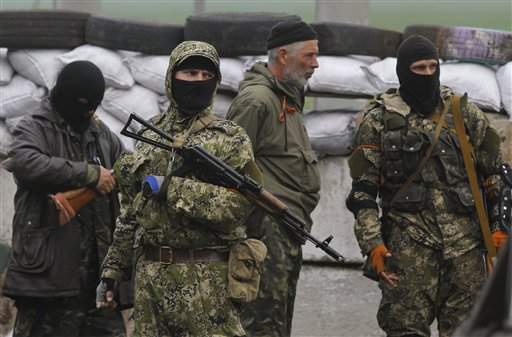
Putin’s Smart Defense: Wars, Rumors of War, and Generations of Wars (Part Two)
Publication: Eurasia Daily Monitor Volume: 11 Issue: 109
By:

Russia’s response to the EuroMaidan, which dislodged president Viktor Yanukovych’s government, utilized a broad range of political and military tools leveraging Moscow’s influence in shaping the future of its close neighbor. It caught Western governments by surprise, stunned critics, silenced analysts, and left the public commentary rooted in reaction to every nuance and twist of a directed, though not entirely controlled, Kremlin narrative. While Moscow no doubt used these tools to maximize its role and influence in the unfolding crisis with Ukraine, it clearly did not exercise full control over all the “separatist” elements converging within Ukraine’s east. Moscow’s experiment in Crimea, perhaps expanded over the following weeks in eastern Ukraine, constitutes a move toward non-linear warfare capabilities (see Part One, EDM June 10).
On May 23, Russian President Vladimir Putin tentatively expressed a willingness to respect the outcome of Ukraine’s presidential election on May 25; but since then, Moscow has carefully avoided a full endorsement of the election’s outcome. On June 2, in the context of increasing violence in eastern Ukraine, Moscow attempted to gain United Nations Security Council backing for a resolution calling on an end to the violence and the opening of a humanitarian land corridor in the country. The effort achieved little progress but confirmed the Kremlin’s diametrically opposing view on the crisis compared to Western counterparts. Anders Fogh Rasmussen, Secretary General of the North Atlantic Treaty Organization (NATO), described Russia’s actions in Ukraine as “irresponsible and illegal,” and a “serious challenge to a Europe whole, free and peace” (RIA Novosti, June 3).
Reporting on the Crimea aspect of the crisis had missed most of the crucial elements in the Russian experiment with non-linear warfare. The force mix—including all the elements of the long-discussed rapid reaction forces modeled on the elite Airborne Forces (VDV), but also including naval infantry, GRU Spetsnaz (military intelligence special forces) and supporting manoeuver brigades—benefited from the nature of the operating environment and the presence of the Black Sea Fleet’s HQ in Sevastopol. The movement of forces, conduct and discipline in the Crimea operation was way advanced compared to the invasion of Georgia in 2008. There were almost no Russian conscripts involved, reflecting moves in the VDV and the Ground Forces to reconstitute the earlier model, from 2010–2012, of battalion tactical groups (BTGs) staffed with kontraktniki (contract soldiers) (Interfax, April 17; Ren TV, March 4).
To date, Western and Russian analyses of the Crimea operation and the Ukraine crisis in general has missed a number of major advances in Russian military capabilities. These include the force mix for operations such as Crimea, the use of exercises and snap inspections to pressure a local conflict situation, advances in manning to create fully contract BTGs, as well as the use of new tactics, terms and an approach to warfare that leaves August 2008 looking like ancient history.
It is possible to describe such a conflict as a fourth generation war, which blurs the lines between politics and war and between combatants and civilians. They are complex and create “wicked problems” for the militaries, which must fight them. The struggle is non-linear (nelineynaya voyna) and involves the application of a whole range of means to affect the conflict’s center of gravity, which is the civilian population itself. Both sides will seek to exploit the human terrain. The insurgents will attempt to conceal their assets there and to provoke the opposing state’s armed forces into actions, seeking to isolate the central government from the indigenous population. The state forces, on the other hand, will need to use the human terrain to assure the local population of its intent to restore order, establish the rule of law, and protect the life and property of its citizens. Some analysts and Western governments welcomed the reduction of Russian troops on Ukraine’s border, naively ignoring just how fast those troops had appeared and can reappear in the same location. Russia, in Vladimir Putin’s world, never steps back from the brink.
This vortex of Russian planning and security thinking, along with its views on future war and ongoing military experiments and modernization, has plunged the North Atlantic Alliance back to reconsidering collective defense. The Kremlin has a new tool at its disposal—and though largely restricted to special forces and elite units in Crimea, this is likely to be extended in the years ahead to widen the options and force mix at the disposal of Russian planners. Analysts and Western governments failed to foresee Russian actions during the crisis, which demands greater levels of understanding concerning what Moscow did that marked novelty and how this was achieved. This understanding, in turn, is a prerequisite for predicting the likely course of Russia’s future actions. Seen from a NATO perspective, the crisis establishes the emergence of an asymmetrical actor on the periphery of the Euro-Atlantic space, blurring the distinction between war and peace, with unpredictable and potentially dangerous consequences.
It remains to be seen whether Ukraine’s ongoing Anti-Terrorist Operation will end the armed resistance in the east in a quick victory, bring about the evolution of that struggle into a protracted civil war, or even produce a direct, overt Russian military intervention and a much wider war. Newly elected President Poroshenko does not face an easy task in achieving peace and reform in Ukraine. Vladimir Putin has many military and political cards to play in this dangerous situation, which will define the future of Ukraine and the issue of war or peace for Eurasia, including the fate of Russia.




